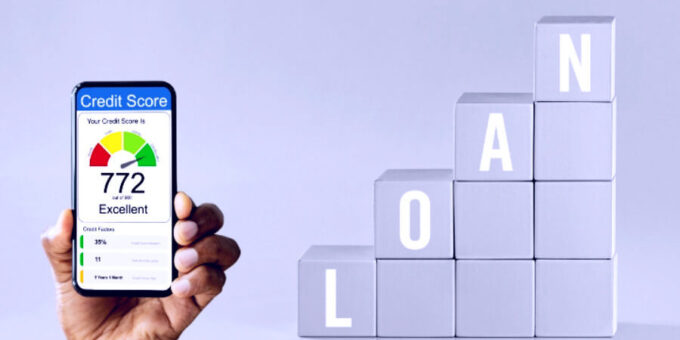
Your credit score is more than just a three-digit number. It is your financial passport. It determines whether you get approved for a mortgage, the interest rate you will pay on a car loan, and even the credit card rewards you can access. A high score can save you tens of thousands of dollars over your lifetime. A low one can put your biggest goals on hold.
Fortunately, your credit score is not set in stone. You are in the driver’s seat. By understanding the key factors that shape your score and implementing a few powerful strategies, you can take control of your financial reputation and open the door to better loan approvals.
This guide will break down exactly what you need to do. Let’s demystify the process and start building your best possible credit score today.
First, Understand What Makes Up Your Score
Lenders use scoring models, like FICO and VantageScore, to assess your creditworthiness. While the exact formulas are secret, they all weigh five key factors. Understanding these is the first step to mastering your score.
-
Payment History (35%): Do you pay your bills on time? This is the single most important factor.
-
Amounts Owed / Credit Utilization (30%): How much of your available credit are you using?
-
Length of Credit History (15%): How long have your credit accounts been open?
-
New Credit (10%): How often are you applying for new credit?
-
Credit Mix (10%): Do you have a healthy mix of different credit types, like credit cards and installment loans?
Now, let’s turn this knowledge into an actionable plan.
1. Make On-Time Payments Your Top Priority
Your payment history carries the most weight, so this is non-negotiable. A single late payment can drop an excellent credit score by over 100 points and stay on your report for seven years.
Actionable Steps:
-
Set Up Autopay: Automate at least the minimum payments for all your bills. This is your best defense against simply forgetting a due date.
-
Create Calendar Alerts: For bills that don’t have autopay, set up digital reminders on your phone or calendar a few days before the due date.
-
If You Miss a Payment: If you are only a few days late, call your creditor immediately. If you have a good history, they may agree to waive the late fee and not report it to the credit bureaus.
2. Master Your Credit Utilization Ratio
Your credit utilization ratio is the amount of revolving credit you are using divided by your total credit limits. Lenders see high utilization as a sign of financial distress.
Actionable Steps:
-
Follow the 30% Rule: Aim to keep your utilization below 30% on each card and overall. For the best scores, under 10% is ideal.
-
Pay Down Balances: The most direct way to lower your utilization is to pay down your credit card debt.
-
Ask for a Credit Limit Increase: If you have been a responsible customer, call your credit card company and request a higher limit. A higher limit will instantly lower your utilization ratio, assuming your spending stays the same.
3. Keep Your Old Credit Accounts Open
The length of your credit history matters. A longer history shows lenders you have more experience managing credit responsibly. This is why you should think twice before closing an old credit card.
Closing an old, unused card can hurt your score in two ways. First, it shortens your average age of accounts. Second, it removes that card’s credit limit from your total available credit, which can increase your overall credit utilization ratio.
Actionable Step:
-
Even if you don’t use an old card anymore, keep it open. Use it for a small, recurring purchase every few months (like a streaming service) and pay it off immediately. This keeps the account active and working for you.
4. Be Strategic and Sparing with New Credit
Every time you apply for new credit, it results in a “hard inquiry” on your credit report, which can temporarily dip your score by a few points. Opening several new accounts in a short period can look risky to lenders.
Actionable Step:
-
Only apply for new credit when you truly need it. Avoid signing up for store credit cards just to get a one-time discount. When you are shopping for a major loan like a mortgage or auto loan, try to do all of your applications within a 14-day window. Scoring models typically treat these as a single inquiry.
5. Regularly Check Your Credit Reports for Errors
Errors on your credit report are surprisingly common, and they can be devastating to your score. A debt that isn’t yours or an incorrectly reported late payment can prevent you from getting a loan. You are your own best advocate.
You are legally entitled to a free copy of your credit report from each of the three major bureaus (Equifax, Experian, and TransUnion) every year. You can access these through the official government-mandated site: AnnualCreditReport.com.
Review each report carefully. If you find an error, you must dispute it with the credit bureau. For a step-by-step walkthrough of this process, see [Our Complete Guide to Disputing Credit Report Errors](your-internal-link-here).
Conclusion: Consistency is the Key to an Excellent Score
Maximizing your credit score is a marathon, not a sprint. It is built through a series of small, consistent, and responsible habits over time.
Focus on the fundamentals: pay your bills on time, keep your balances low, and be thoughtful about taking on new debt. By making these strategies a part of your financial routine, you will build a powerful credit score that not only gets you approved but saves you a fortune in the long run.
You can also read HERE more about this article.
